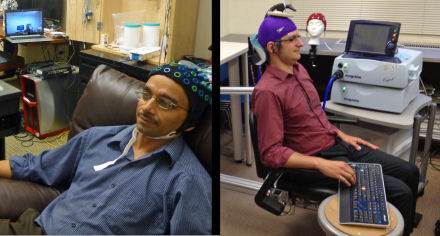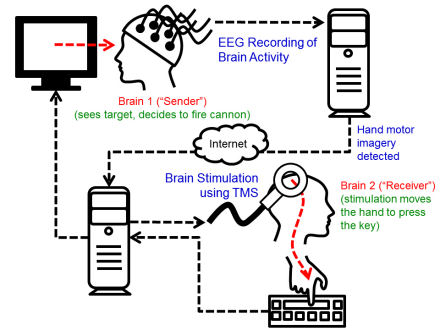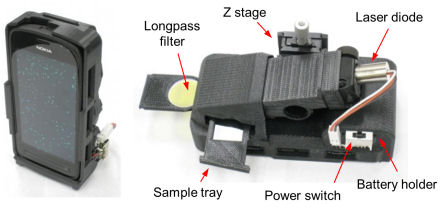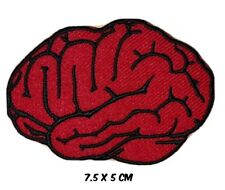
Previously, researchers at Duke University had demonstrated brain-to-brain communication between two rats. But University of Washington researchers Rajesh Rao and Andrea Stocco believe theirs is the first demonstration of human-to-human brain interfacing.
The technologies used by the researchers for recording brain signals and delivering them to the receiver are not new. Electroencephalography (EEG) is routinely used by clinicians and researchers to record brain activity non-invasively from the scalp.
To deliver the signal to the recipient, transcranial magnetic stimulation (TMS) was used. TMS is a non-invasive way of stimulating the brain to elicit a response. Its effect depends on where the scalp coil is placed; in this case, it was placed directly over the brain region that controls a person’s right hand. By activating these neurons, the stimulation convinced the brain that it needed to move the right hand.
Co-researchers Matthew Bryan, Bryan Djunaedi, Joseph Wu, Alex Dadgar, and Dev Sarma, wrote the computer code that translates Rao’s brain signals into a command for Stocco’s brain.

The team had a Skype connection set up so the two labs could coordinate, but neither Rao nor Stocco could see the Skype screens.
For the demonstration, Rao looked at a computer screen and played a simple video game with his mind. When he was supposed to fire a cannon at a target, he imagined moving his right hand (without actually move his hand), causing a cursor to hit the “fire” button. Almost instantaneously, Stocco, who was wearing noise-canceling earbuds and not looking at a computer screen, involuntarily moved his right index finger to push the space bar on the keyboard in front of him, as if firing the cannon.
Stocco compared the feeling of his hand moving involuntarily to that of a nervous tic.
Rao stressed the technology only reads certain kinds of simple brain signals, not a person’s thoughts. “I think some people will be unnerved by this because they will overestimate the technology,” Prat added. “There’s no possible way the technology that we have could be used on a person unknowingly or without their willing participation.”
The researchers next plan to conduct an experiment that would transmit more complex information from one brain to the other. Stocco said years from now the technology could be used, for example, by someone on the ground to help a flight attendant or passenger land an airplane if the pilot becomes incapacitated. Or a person with disabilities could communicate his or her wish, say, for food or water. The brain signals from one person to another would work even if they didn’t speak the same language.
Related:
Discuss this article in our forum
Thought-controlled drone demonstrated
Researchers Demo Neural Implant That “Learns”
Evolution And The Hive Mind

















Comments are closed.